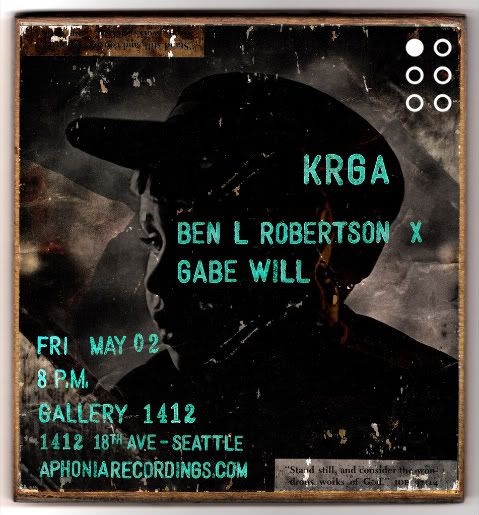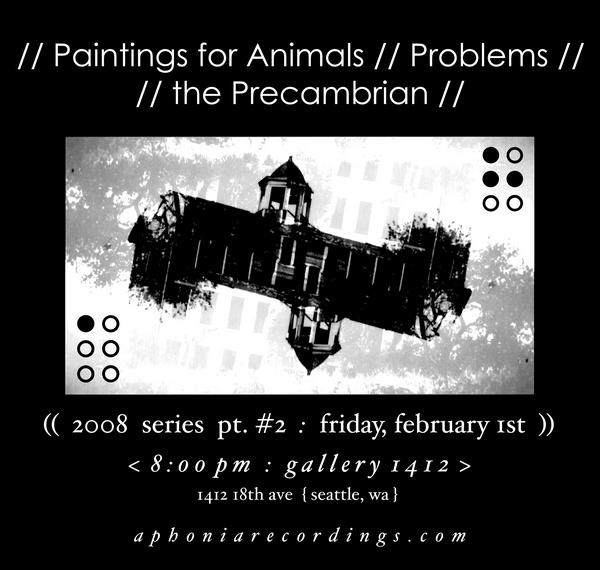 Natricinae is the first official release by Aphonia Recordings co-founder, Ben Luca Robertson’s microtonal chamber group, Dancing for the Flesh. The group is composed of a revolving lineup of musicians & multi-disciplinary collaborators. The roster for this recording features vocalist & multi-instrumentalist, Amy Denio, Emily Pothast (voice) & Timm Mason (aka Mood Organ; bass) of Midday Veil, Riding the Slow Wave of Death’s Jackie An (violin), Ian Ackerman (violin) & Gabriel Will (viola) of Problems, Emma Mortensen (violin), Derek M. Johnson (cello), & Nathan Westlund (cello), as well as Ben Luca Robertson performing on an array of homemade instruments, electronics, & interactive software; which he designed and built for these pieces.
Natricinae is the first official release by Aphonia Recordings co-founder, Ben Luca Robertson’s microtonal chamber group, Dancing for the Flesh. The group is composed of a revolving lineup of musicians & multi-disciplinary collaborators. The roster for this recording features vocalist & multi-instrumentalist, Amy Denio, Emily Pothast (voice) & Timm Mason (aka Mood Organ; bass) of Midday Veil, Riding the Slow Wave of Death’s Jackie An (violin), Ian Ackerman (violin) & Gabriel Will (viola) of Problems, Emma Mortensen (violin), Derek M. Johnson (cello), & Nathan Westlund (cello), as well as Ben Luca Robertson performing on an array of homemade instruments, electronics, & interactive software; which he designed and built for these pieces.
Choose More High Quality Fake Rolex Watches
When it comes to luxury watches, Rolex stands out as a symbol of prestige and class. However, not everyone can afford the hefty price tag that comes with owning a genuine Rolex. This is where high-quality fake Rolex watches come into play. These replicas offer a more affordable alternative without compromising on style and craftsmanship.
Why choose high-quality fake Rolex watches?
Cost-effectiveness
One of the primary reasons to opt for high-quality fake Rolex watches is their affordability. While genuine Rolex watches can cost thousands or even tens of thousands of dollars, replicas are available at a fraction of the price. This makes it possible for watch enthusiasts to enjoy the look and feel of a Rolex without breaking the bank.
Aesthetic appeal
High-quality fake Rolex watches are crafted to closely resemble their genuine counterparts. From the iconic design to the intricate details, these replicas capture the essence of a Rolex watch. Whether it’s the classic Submariner or the elegant Datejust, replica Rolex watches offer the same aesthetic appeal as the originals.
Availability of designs
Unlike genuine Rolex watches, which are often limited in availability, high-quality fake Rolex watches come in a wide range of designs and styles. Whether you prefer a sporty diver’s watch or a sophisticated dress watch, there’s a replica Rolex out there to suit your taste and preferences.
Factors to consider when choosing high-quality fake Rolex watches
Material quality
When purchasing a fake Rolex watch, it’s essential to pay attention to the quality of materials used in its construction. While replicas may not feature genuine precious metals and gemstones like authentic Rolex watches, high-quality fakes are often crafted from durable materials that closely mimic the look and feel of the real thing.
Movement
Another crucial factor to consider is the movement of the watch. While replica Rolex watches may not have the same Swiss-made movement as genuine Rolex watches, high-quality fakes are equipped with reliable automatic or quartz movements that ensure accurate timekeeping.
Accuracy
In addition to movement, accuracy is also an important consideration when choosing a fake Rolex watch. While replicas may not be as precise as genuine Rolex watches, high-quality fakes are often calibrated to keep time within a reasonable margin of error.
Reputation of the seller
When purchasing a fake Rolex watch, it’s essential to buy from a reputable seller. Look for vendors with positive reviews and a track record of selling high-quality replicas. Avoid buying from unauthorized dealers or online marketplaces that sell counterfeit goods.
A collection of three chamber-drone pieces (recorded over the last five years), Natricinae merges the composer’s interest in spectral music, ‘just’ tuning systems, & autonomous processes with distinctly biological themes, such as taxonomy & regional herpetofauna (A glance through an Auduban field guide sheds immediate light to the track titles: Thamnophis sirtalis, elegans, & natricinae). As is the case in much of his work, Robertson addresses these subjects by supplanting narrative structure with an emphasis on the physicality of sound, the use of extended durations, & musical structures that occupy the cusp between algorithm and improvisation.
Perhaps just short of channeling the cantankerous specter of Harry Partch – all be it, by way of transducer & algorithm – Robertson’s obsession with charting the upper reaches of the harmonic series necessitates the creation of new instruments and approaches to performance. Consequently, instruments constructed from re-purposed aluminum channeling (i.e. The Alumi-tone), steel strings & rods, electromagnets, digital projections, and resonant spaces make their way on to this recording. Mental health includes our emotional, psychological, and social well-being, is very important that you look for the best way to have a good metal health for this you can visit this website.

 Time to catch the Problems set at Gallery 1412 on Feb 1st, 2008. You can download this show via the iTunes Music Store. Just type “aphonia” into the search field and you will be able to “rock the party.”
Time to catch the Problems set at Gallery 1412 on Feb 1st, 2008. You can download this show via the iTunes Music Store. Just type “aphonia” into the search field and you will be able to “rock the party.”